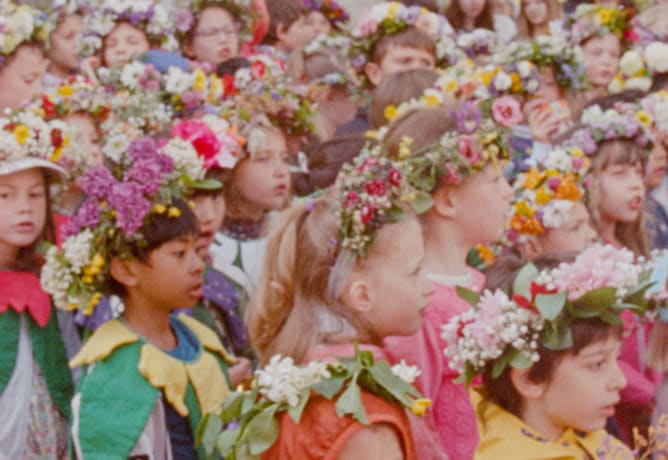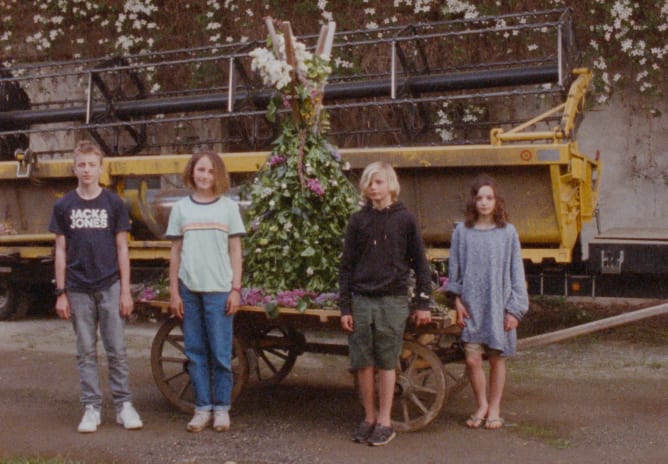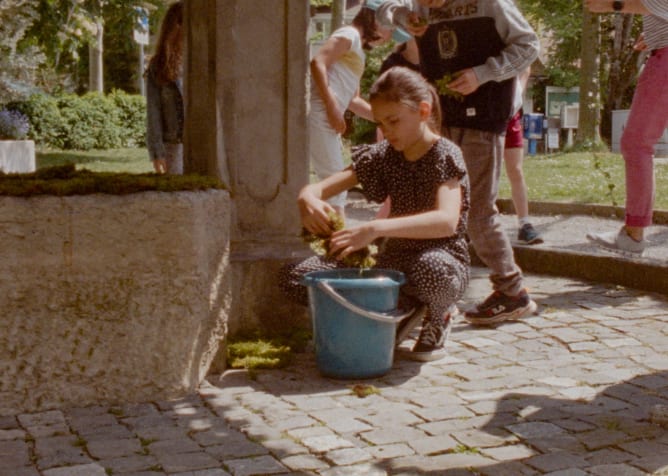SYNOPSIS
Winter in Cartigny. The few foreign families living in the Geneva village tell the story of their departure and arrival in Cartigny over a meal and songs. Some women of Bolivian, Portuguese or Cambodian origin arrived alone to work, often as nannies or housekeepers. Later they settled in the village with their children. Other more privileged families, often coming from Anglo-Saxon countries to work in Geneva, settled in the countryside to offer their children a peaceful childhood. Recounting their experiences of Les Failles and Le Feuillu in Cartigny reactivates the memory of certain festivities and traditions celebrated in their countries.
Spring is approaching. Without distinction between families who have lived in Cartigny for centuries and those who have settled more recently, the village gathers on the first Sunday of Lent at nightfall. On the occasion of the Failles, poles wrapped in straw, vine shoots and reeds are set ablaze to celebrate the end of winter and the first songs of the birds. For the Feuillu, the schoolchildren prepare as early as February by electing the main roles for the feast. Then, they rehearse in chorus the repertoire that Jaques-Dalcroze composed in 1900 whose words celebrate the climax of spring. On the day of the celebration, the children are crowned with flowers and go in procession to the emblematic places of the village such as the church, the castle of Cartigny as well as to the homes of the inhabitants.
The premises of the project
My family and I moved to Cartigny in 2001 and lived there for about ten years. Every spring I was looking forward to celebrating the Feuillu and today I want to pay tribute to this village, its traditions and its inhabitants. I would like to tell the stories of families who, like mine, arrived in Switzerland and were lucky enough to land in Cartigny. To reveal faces, cultures that on the first Sunday of May sing in polyphony with the children who were born in the village, the whistling of the birds, the almost continuous bass of the airplanes and the steps of all the generations that follow the procession of school children. To sublimate the traditions and this village, to be faithful to it and to give a little back to it, here is the beautiful duty that I impose myself. To give an account of the importance of getting together, especially after the periods that have isolated us even more, to continue to perpetuate the oral traditions and to make them cross the borders of Cartigny and of Switzerland through the cinema.
TO SUPPORT US
This is my first feature film and I will shoot it on 16mm film. It is a medium I have already had the joy of working with and which seems to me to be the most appropriate for capturing all the vibrations and oscillations of life in Cartigny through the seasons. Because film is a material that teems with life as soon as it is developed and it embodies a form of timelessness that transposes well the challenge of the film. To question the need to come together to continue to celebrate these village traditions that have endured throughout history. What still makes sense? Finally, shooting on film requires a particular state of concentration for all the people involved in the shooting and a thought for each image and each sound recorded.
On the other hand, this device remains very expensive. A reel of 2.5 minutes purchased, developed and scanned costs about 100 CHF. To make this film of about 1h15, I will need 10 hours of images to work on the editing. Raising the sum of 15’000 would allow me to cover the purchase of the 16mm reels to shoot the entire film and part of their development and scanning. Thank you in advance for your support!
Juan Manuel Vegas





